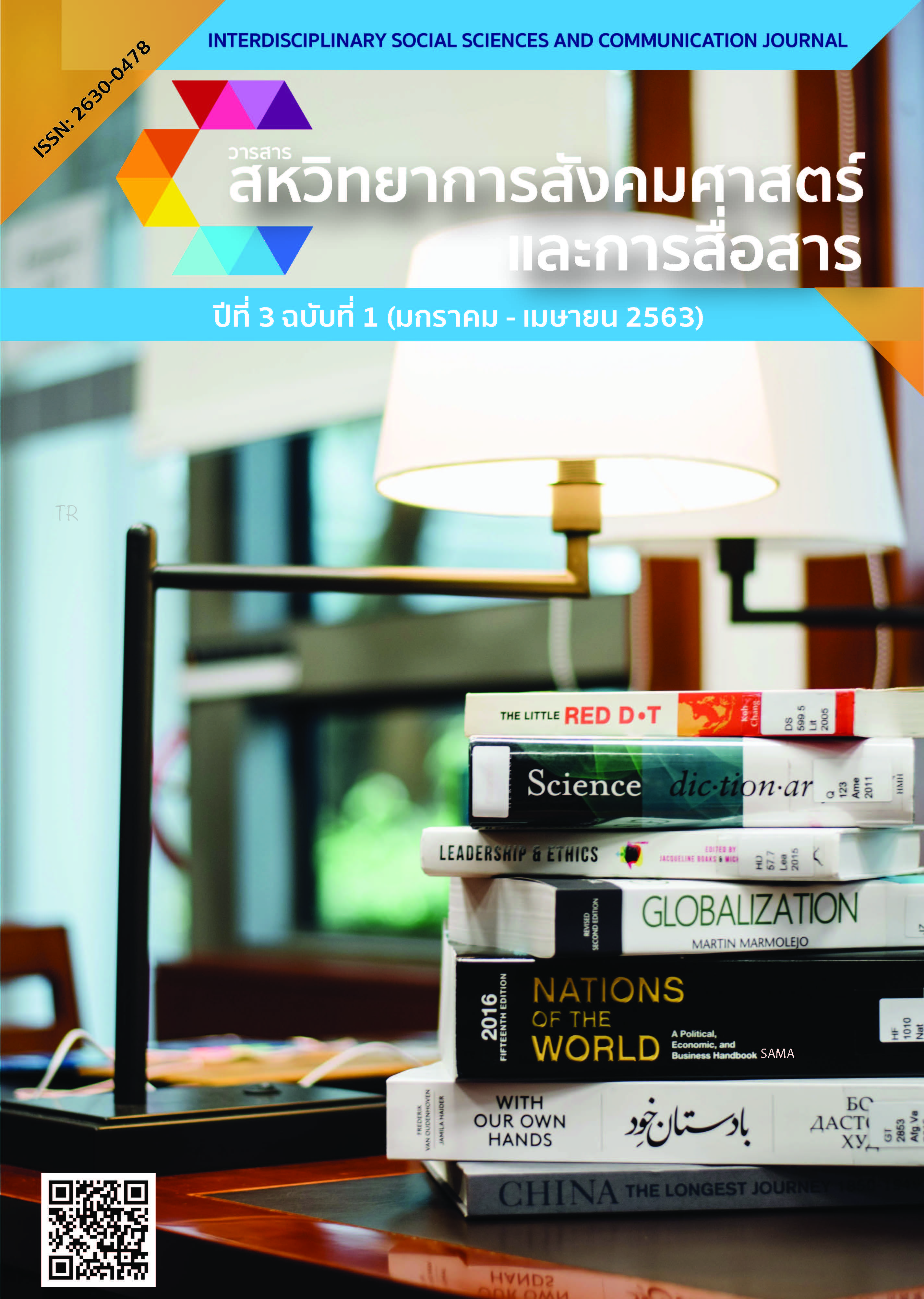Article 5 : A GENRE ANALYSIS OF ONLINE ENGLISH TOURIST ATTRACTION PROMOTIONAL TEXTS IN LIJIANG YUNNAN PROVINCE
Main Article Content
Abstract
This study aimed to analyze and compare the move structures and
linguistic features of natural and man-made tourism discourses in Lijiang,
Yunnan Province, China PR. Sixty-three tourist attraction promotional texts that
included 25 natural attraction texts and 38 man-made attractions texts were
selected from the top 5 tourism websites in Lijiang, Yunnan Province, China PR.
The move-step frameworks proposed by Swales (1990), Bhatia (2008), Xianqing
(2013), and Liying (2016) were applied for analyzing the move structures and
linguistic features of the tourist attraction promotional texts. The result reveals
that the move structure of tourist attraction promotional texts basically
contained 12 moves; however, they are different in regard to the moves
employed in the two categories. Similarities and differences are rooted from the
communicative purpose and private intentions according to each of the
attractions. The linguistic features used to realize the communicative purpose
of the move and co-responsed to the move function were, for example, modal
verbs and adjectives.
Article Details
The author(s) is only responsible for data appearing in the submitted manuscript of Interdisciplinary social sciences and communication journal.Besides, this journal encourages and enables you to share data such as statements, contents, figures, etc. that support your research publication where appropriate, and enables you to interlink the data with proper citation.
References
London: Longman.
Bhatia, V. K. (2008). Worlds of written discourse: A genre-based view. London:
Longman.
Bazerman, C. (1988). Shaping written knowledge: The genre and activity of the
experimental article in science. Madison WI: University of Wisconsin
Press.
Cooper, C., Fletcher, J., Gilbert, D., & Wanhill, S. (1993). Tourism principles and
practice. Essex: Longman.
Goddard, A. (1998). The language of advertising. London: Routledge.
Holloway, J. C. (1994). The business of tourism. London: Pitman Publishing.
Henry, A., & Roseberry, R. L. (1996). A corpus-based investigation of the language
and linguistic patterns of one genre and the implications for language
teaching. Research in the teaching of English, 30(4), 472-489.
Inskeep, E. (1991). Tourism planning: An integrated and sustainable
development approach. New York: Van Nostrand Reinhold.
Iborra, A., & Garrido, F. R. M. (2001). The Genre of Tourist Leaflets. PASAA, 32,
71-81.
Leech, G. N. (1966). English in advertising: A linguistic study of advertising in
Great Britain. MI: Longmans.
Leask, A. (2003). The nature and purpose of visitor attractions. In A. Fyall, A.
Leask, & B. Garrod (Eds.), Managing visitor attractions: New directions
(pp. 26-36). London: Butter-worth-Heinemann.
Lei, J. (2009). a contrastive genre analysis of scenic spot texts in China and
Singapore. Unpublished master’s thesis, College of Foreign Languages
of Chongqing University, China.
Lu, Z. (2010). Genre analysis of Chinese and British travel brochures.
Unpublished master’s thesis, Xi’an Technological University, China.
Liying, S. (2016). A comparative study of English and Chinese tourism discourses
from the perspective of genre analysis. Unpublished master’s thesis,
Qufu Normal University, China.
National Tourism Administration of the People’s Republic of China. (2016).
The yearbook of China tourism statistics. Beijing: China Tourism Press.
Peters, M. (1969). International tourism. London: Hutchinson.
Swaarbrooke, J. (1995). The development and management. Boston: CABI
Publishing.
Swales, J. M. (1990). Genre analysis: English in academic and research settings.
Cambridge: Cambridge University Press.
Vaičenonienė, J. (2006). The language of advertising: Analysis of English and
Lithuanian advertising texts. Kalbų Studijos, nr. 9, 43-55.
Xianqing, L. (2013). A Genre Analysis of English Tourist Information Texts of
Tibetan Destinations. (Unpublished master’s thesis). Graduate School
of Lanzhou University of Technology.


